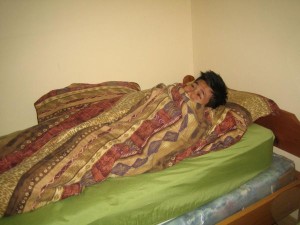Measles or rubeola is considered as a global disease that occurs mainly in children. Measles is usually a self-limiting condition that manifests with a prodrome period and a distinctive rash. After the administration of the live attenuated vaccine, the cases of measles have dropped drastically all over the globe.
How measles spread
Measles spread through respiratory droplets in which the virus can survive for at least 2 hours as droplets with an incubation period of 9-12 days. There are three distinct stages – incubation, prodromal and exanthema.
The prodromal stage is characterized by malaise, fever, conjunctivitis and upper respiratory symptoms such as nasal discharge, cough and sneezing that persists for 3-4 days.
During the second day of the rash, the virus in the pharyngeal secretions could not be detected. The rash starts to spread down the neck, trunk and extremities. By the third day, the entire body is covered with rash. Koplik’s spots which are white-colored bumps on a red base in the mount typically manifest 24-48 hours before the start of the rash and can last for 2-3 days. After 6-7 days, the rash clears and the fever subsides.

Diagnosing measles
The diagnosis of measles is typically delayed due to the non-specific initial symptoms that manifest. A clinical diagnosis is made at the start of the rash. In most cases, a culture of the measles virus in different secretions is usually difficult.
Complications
Some of the complications of measles include pneumonia, otitis media, encephalitis, as well as diarrhea and thrombocytopenia purpura. In case the infection occurs during pregnancy, fetal death can occur.
Treatment
The administration of high doses of vitamin A will minimize the morbidity and mortality of children hospitalized with measles. Otherwise, the treatment is symptomatic which includes bed rest, antipyretics and analgesics.
At the present, immunizations are highly effective. The first dose is given at 15 months of age and then followed by the second dose that is given at 5 years of age. If given up to 5 days after exposure, vaccination can prevent the infection. In most cases, a faint rash will occur 7-10 days after the immunization. Young infants below 4 months old have protection from the acquired maternal measles antibody. It is vital that infants will receive the vaccine once the required age is reached in order to reduce the risk for acquiring the condition.
Prevention of measles
Measles is considered as a preventable disease. The cases of measles have drastically reduced after the development of the vaccine. There are various factors that contribute to the prognosis of measles which includes the age of the individual, general health and nutritional status. It is vital to stick with the two-dose vaccination schedule since it has been proven to reduce the cases of morbidity and mortality.
